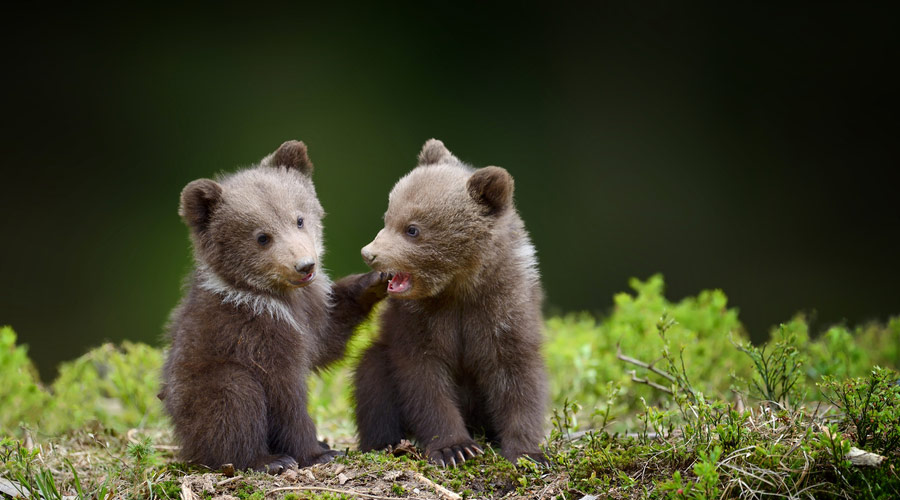Five-month-old Siyang and three of her peers are all set to make Pakke Tiger Reserve (PTR) in Arunachal Pradesh their new home, having completed the acclimatisation process in the national park under the supervision of experts over the past few months.
Siyang, an Asiatic black bear cub, was rescued by local environmentalists when it was just one month old.
The tiny one was then brought to the Centre for Bear Rehabilitation and Conservation (CBRC) here, where it was nursed back to health, said one of its officials.
The cub was found in a dehydrated condition on the Siang river bed, and was named after the river.
At the centre, Siyang met three other rescued friends two male cubs, Den and Itna, and another female Devi and the four got along well quickly, the CRBC official said.
"Orphaned bears are made to go through the acclimatisation process before they are released in the wild. These four will be released in the reserve in December or early January next year," he said.
Siyang is the most active of the four and a favourite of all forest personnel, CBRC head Panjit Basumatary said.
"The day begins with morning walks deep inside the reserve. They play and fight with each other, climb trees and feed on fruits and insects before returning home," Basumatary stated.
During their walks, which are monitored by animal keepers and biologists, the cubs learned to forage and also gradually developed their wild instincts.
"Once the cubs become reluctant to follow their keepers back to the camp, they are ear-tagged, micro-chipped and radio-collared for soft release in the wild. Eventually, if they do not return to their cages anymore, they are considered ready for the wild. However, they are monitored for a few more months before release," the CBRC chief said.
Millo Tasser, the deputy conservator of forest (wildlife), pointed out that bear cubs take time to adjust to a new environment and overcome their proximity to humans, with some getting more attached to the caretakers than the other.
"The ones that find it more difficult to adjust are sent to zoos for captive rearing," Tassar said.
Basumatary further explained that poachers often kill Asiatic bears for their skin, leaving their cubs orphaned.
Their population has also declined over the years due to deforestation, habitat loss and other abiotic factors, he added.
PTI











